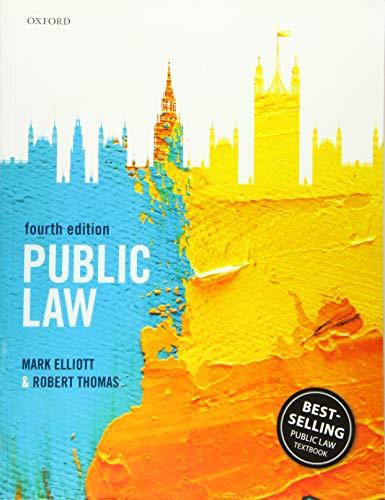Question
On July 1, 2014 a Canadian importer enters into contract to purchase silk scarves from a supplier in China. The contract states that the price,
On July 1, 2014 a Canadian importer enters into contract to purchase silk scarves from a supplier in
China. The contract states that the price, in U.S. dollars, is $2.75/piece, FOB Shanghai. The contract
contains the following:
Description:100,000 dozen to be made of 80% silk/20% wool scarf, 40" in length, royal blue paisley pattern
Latest shipment date: January 31, 2015
Partial shipments: permitted
Packing: one dozen per cardboard box
Payment: Irrevocable letter of credit payable at 60 days sight
Inspection: Inspection to be provided by third party inspection service, nominated by and paid for by the buyer
The letter of credit is opened by the buyer and incorporates all of the above.
A request by the buyer, permitted in a letter of credit, that the seller ships 20,000 scarves on
October 1, 2014 after the merchandise has been inspected by the third party inspection service. The
report of the inspection service reported that the merchandise is in conformity with specifications as
provided by the purchaser. Documents are submitted to the opening bank. Upon receipt of the
documents on October 10, the opening bank notices that the merchandise description on the invoice
and packing list reads: "silk/wool scarf, 40" in length royal blue paisley". The bank contacts the buyer,
indicating there are issues in the documents. The buyer contacts the supplier,
asking them what they actually shipped. The supplier states, in writing: "The scarf is 80% silk/20% wool
royal blue paisley." Based on this written statement, the buyer "accepts" the documents on October 12.
Accordingly, documents are released. On October 30, the supplier ships an additional 20,000 scarves following an inspection. It submits documents, including the inspection certificate, which indicates the product is in conformity, to the bank.
On November 1, the first 20,000 scarves arrive at the port of Canada . After obtaining customs
clearance, the buyer takes possession of the merchandise. Upon receipt, the buyer randomly pulls 20 scarves for testing. The results of the test stated that the fabric content, by weight, is 75% silk, 25%wool.
What recourse does the buyer have? Can he seek assistance from court? Is he liable for payment on the first shipment. What about the second shipment? What options the buyer have about the remaining scarves, that as of
October 30th have not shipped.
Would your answers be different if the results of the random test indicate that the scarves are 100%
polyester?
Step by Step Solution
There are 3 Steps involved in it
Step: 1

Get Instant Access to Expert-Tailored Solutions
See step-by-step solutions with expert insights and AI powered tools for academic success
Step: 2

Step: 3

Ace Your Homework with AI
Get the answers you need in no time with our AI-driven, step-by-step assistance
Get Started


